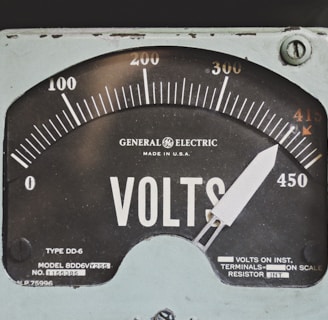Power Up Your Adventure: Onboard Power Solutions for Overlanding Vehicles
1/7/20255 min read


Introduction to Onboard Power Solutions
Onboard power solutions are integral components for any overlanding vehicle, serving as the lifeblood of energy needed to support a range of activities in remote environments. These systems encompass various methods of generating, storing, and distributing electrical power, which is essential for both daily conveniences and safety measures while exploring off-the-grid locations. With an increasing number of adventurers seeking the thrill of remote travel, the demand for reliable onboard power systems has never been more pronounced.
The primary reason why overlanders require dependable power solutions is the necessity to charge personal devices. Many individuals depend on mobile phones, GPS units, and other electronic gadgets not only for navigation but also for communication and entertainment during their journeys. The ability to keep these devices powered is crucial, particularly in case of emergencies where effective communication can mean the difference between safety and distress.
In addition to charging devices, overlanders often utilize their onboard systems to run various appliances. Refrigerators, cooking equipment, and lighting are just a few examples of how power can enhance the quality of life while camping in the wilderness. Maintaining a comfortable and practical living space while on the road contributes immensely to the overall experience of overlanding, transforming a simple excursion into a more enjoyable adventure.
Moreover, onboard power solutions play a vital role in ensuring safety during extended trips in remote areas. It's not uncommon for overlanders to face unforeseen circumstances, from harsh weather conditions to vehicle breakdowns. A dependable power system can support vital functions, such as emergency lights and heating systems, ensuring safety and comfort throughout the duration of the expedition. Understanding the various types of onboard systems available will help adventurers make informed decisions tailored to their specific needs, setting the groundwork for a successful overlanding experience.
Simple Onboard Power Setups
For individuals embarking on their overlanding journey, uncomplicated onboard power solutions can provide the necessary energy without overwhelming complexity. A basic setup typically includes portable battery packs, solar chargers, and small inverter systems, each of which caters to different needs while ensuring cost-effectiveness and ease of installation.
Portable battery packs are particularly popular among overlanders seeking a straightforward power solution. These units come in various capacities, allowing users to recharge multiple devices, from smartphones to small appliances. Their compact size makes them easily transportable, fitting snugly within vehicle storage spaces. Many models feature built-in USB ports and AC outlets, making it convenient to power essential electronics while on the move.
In addition to battery packs, solar chargers have gained popularity due to their eco-friendly nature. These devices harness sunlight to generate electricity, enabling adventurers to maintain power without relying on fossil fuels. A solar panel system can be set up quickly; many panels are foldable and lightweight, allowing users to unfold them during daylight hours and tuck them away for the night. This increases the overall versatility of onboard power setups, making solar chargers perfect for extended trips in remote areas.
Small inverter systems represent another viable option for those desiring a simple power solution. These inverters convert DC power from the vehicle's battery into usable AC power. They usually come in various wattages, making it possible to run small household devices or charge larger electronics. Their installation requires minimal effort, as they can often be plugged directly into the vehicle’s auxiliary power outlet.
Overall, these straightforward onboard power setups not only provide utility but also promote a more enjoyable overlanding experience. By leveraging portable battery packs, solar chargers, and small inverters, adventurers can ensure they remain connected and powered while embracing the great outdoors.
Intermediate Power Solutions for Enthusiasts
As overlanding continues to rise in popularity, many enthusiasts find themselves seeking advanced power solutions that enhance their adventure experiences while maintaining a connection to modern conveniences. Among the most effective intermediate power solutions are dual battery systems, dedicated solar setups featuring larger panels, and advanced charging systems integrated with the vehicle’s alternator. These options strike a balance between capability and complexity, allowing for extended journeys without going completely off-the-grid.
A dual battery system is an excellent choice for overlanders looking to increase their power capacity. By utilizing two batteries—one dedicated to starting the vehicle and the other reserved for accessories—users can keep their electronics charged without risking the main battery’s performance. This setup not only enhances reliability but also allows for the use of appliances and gadgets during stops. However, the added weight and cost of a second battery should be considered, along with the potential complexity of installation.
Dedicated solar setups, equipped with larger panels, provide an alternative source of energy. These systems harness solar power to recharge batteries, making them an eco-friendly option for charging devices and running equipment. For enthusiasts who frequently camp in sunny locations, this can be particularly advantageous. It’s essential to select a solar panel that matches power requirements while keeping weight and mounting options in mind. Furthermore, users should consider the investment in a solar charge controller to manage energy flow efficiently.
Integrating a charging system tied to the vehicle's alternator offers another layer of flexibility. This allows the vehicle's engine to charge auxiliary batteries while driving, ensuring that power is readily available when needed. Like the other solutions, it requires careful consideration regarding installation complexity and overall vehicle load. Ultimately, these intermediate power solutions provide overlanders with the necessary flexibility and reliability; upgrading from basic setups may greatly enhance the quality of outdoor experiences.
Advanced Power Systems for Serious Overlanders
In the realm of overlanding, the need for reliable power solutions becomes paramount, especially for those embarking on extended or demanding journeys. Advanced power systems are crucial for serious overlanders who require a sustainable and efficient energy source for various devices and equipment. A complete solar system, consisting of solar panels, battery banks, and charge controllers, serves as an excellent primary energy solution. These systems harness the sun's energy to keep batteries charged, enabling consistent power availability even in remote locations.
Beyond solar panels, a robust battery bank is essential for storing energy. Overlanders often face the choice between lithium and AGM (Absorbent Glass Mat) batteries. Lithium batteries, while pricier, offer higher efficiencies, deeper discharges, and longer lifespans compared to AGM batteries. Their lightweight composition is also a significant advantage for vehicles needing to maximize payload without compromising performance. In contrast, AGM batteries provide a more affordable option with reliable performance, albeit at the cost of depth of discharge and overall longevity.
Power management systems play a critical role in these advanced setups. These systems help monitor and control the usage of available power, ensuring that energy is allocated efficiently across devices such as refrigerators, lights, and communication tools. High-capacity inverters are another essential component, converting stored DC power into usable AC power for even the most demanding appliances. Overlanders should also be mindful of the wiring and charging strategies employed to prevent issues related to overheating and voltage drops, which can compromise performance and safety.
Case studies of seasoned overlanders provide valuable insights into the effectiveness of various power system setups. For instance, those utilizing a combination of solar panels and lithium batteries are often able to efficiently manage their power consumption, allowing for extended trips without the need for external charging sources. Such examples highlight the importance of tailored solutions to meet specific adventure needs, illustrating the transformative impact advanced power solutions can contribute to successful overlanding experiences.
